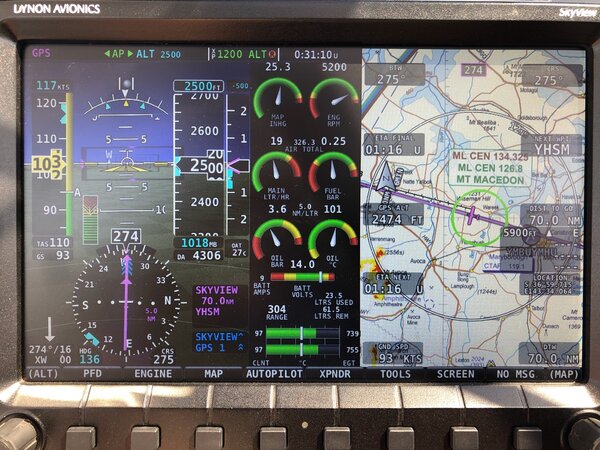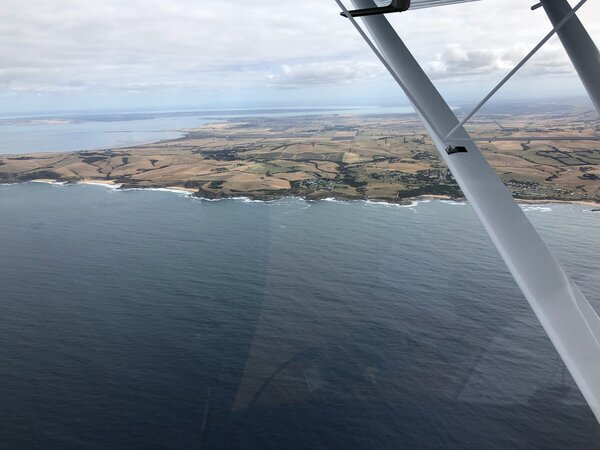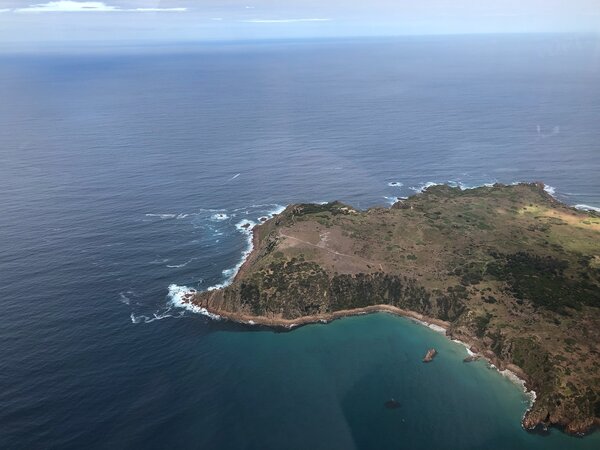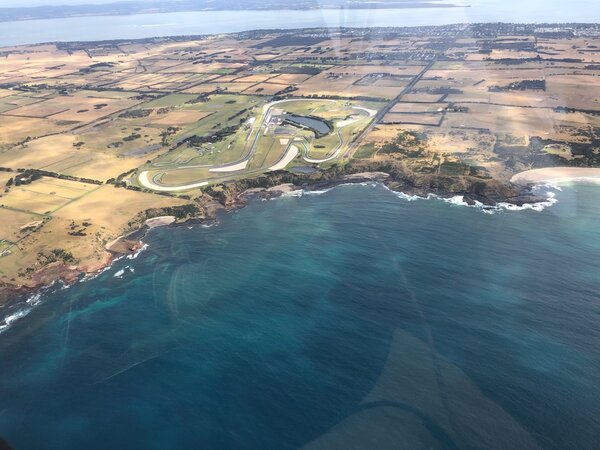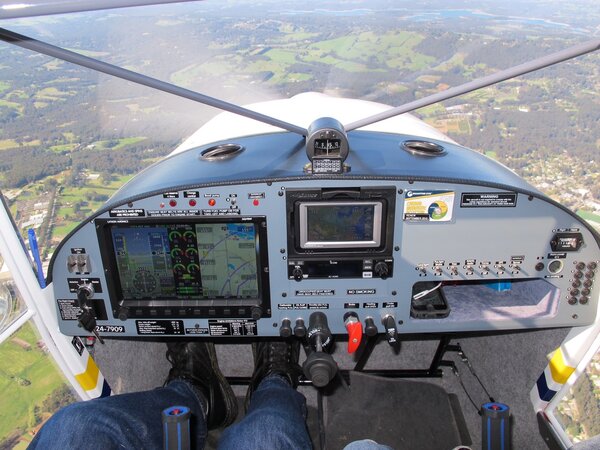-
Posts
493 -
Joined
-
Last visited
-
Days Won
4
Content Type
Profiles
Forums
Gallery
Downloads
Blogs
Events
Store
Aircraft
Resources
Tutorials
Articles
Classifieds
Movies
Books
Community Map
Quizzes
Videos Directory
Everything posted by dsam
-
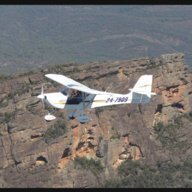
Ethiopian 737-800 Max crash - No survivors
dsam replied to kgwilson's topic in Aircraft Incidents and Accidents
Here is a CBC Canada perspective on this issue: -

Ethiopian 737-800 Max crash - No survivors
dsam replied to kgwilson's topic in Aircraft Incidents and Accidents
Rather than squabble on this forum, I suggest we let the various lawyers biff it out! I think most of us here can recognise (to widely varying degrees) blame apportioned amongst: - Accountants in the manufacturer & airline companies looking to cut costs, - design engineers & software coders, - regulators being too closely allied with manufacturers, - crash investigator’s rather slow release of clear findings after the first crash, - insufficient flight crew training & aircraft manuals (particularly after the first crash) - crew skill demonstrated on the day This list isn’t exhaustive, but it shows how most crashes have numerous factors that culminate in tragedy. I can see all this taking years to sort out in the courtrooms. Unfortunately none of this will erase the sadness of the families that lost their loved ones. -

Ethiopian 737-800 Max crash - No survivors
dsam replied to kgwilson's topic in Aircraft Incidents and Accidents
M61A1, you seem unaware that the MCAS jackscrew operates the whole horizontal stabiliser, not the elevator trim. At its extreme nose down angle, no amount of electric trim + full “back-stick” will correct it! At this point, the forces on the tail surfaces are so extreme, that even with MCAS finally switched off, the manual trim wheels might be impossible for pilots to move without “porpoising” the stick forwards to momentarily un-load the jack screw enough to manually wind the trim wheels back back - a very brave manoeuvre when you are already aiming at the ground! -

Ethiopian 737-800 Max crash - No survivors
dsam replied to kgwilson's topic in Aircraft Incidents and Accidents
I understood the Ethiopian aircraft didn’t have that “optional extra” MCAS connection to both AoA sensors with the “optional extra” disagree circuitry. All it took was for that single AoA sensor to fail and misinform MCAS! Why all this was an optional extra, I’ll never understand... -

Ethiopian 737-800 Max crash - No survivors
dsam replied to kgwilson's topic in Aircraft Incidents and Accidents
I’m not sure what software changes have been made to fix the problems, but number 1 on my list would be to disengage MCAS every time the autopilot is disengaged. The crew should never be left wondering what flight surfaces are still under automated control, (as in the original software setup where it remained active with autopilot off). Number 2 “fix” would always compare data from both AoA sensors (Perhaps even have a 3rd one added). -
I just got back from one of my Aussie “Bucket List” excursions along the Great Australian Bight - west to Eucla, inland to Forrest, then returning home to Melbourne along the coastline again. Magnificent and often isolated scenery! A few 4 hour legs were required, but this was an exhilarating experience I won’t forget. 402AC0AE-8182-4F73-8F64-A5C5D3139F29.MP4 402AC0AE-8182-4F73-8F64-A5C5D3139F29.MP4
-
Yes, I keep my Mark 1 Eyeballs scanning outside, particularly on VFR routes & near aerodromes. I also scan AvPlan, and OzRunways, enhanced with ADS-Pi - in traffic “paints”. It surprises me how that electronic traffic info gets me peering in the exact direction of potentially conflicting traffic, but the eyeballs (thankfully still 20-20) only give me 20 to 30 seconds of visual on oncoming traffic, much less time than the electronic info. Now, if pelicans had ADSB transponders, I could be even better informed?
-

Ethiopian 737-800 Max crash - No survivors
dsam replied to kgwilson's topic in Aircraft Incidents and Accidents
I think it is telling that Europe and Canada will now refuse safety investigations from US authorities (according to ABC Australia). Might that be saying that FAA and Boeing are too closely allied, to the detriment of safety, and the Europeans and Canadians don’t trust them anymore? https://www.abc.net.au/news/2019-03-22/boeing-plans-to-reverse-optional-safety-feature-on-737-max-fleet/10928066 -

Ethiopian 737-800 Max crash - No survivors
dsam replied to kgwilson's topic in Aircraft Incidents and Accidents
As I understand it. MCAS drives the jackscrew “trim” which moves the entire horizontal stabiliser 2.5 degrees downwards at its extreme, pitching the angle of incidence nose down, possibly beyond the range of the elevators to counteract that nose-down attitude (at that extreme). Happy to be corrected on that detail by someone more knowledgeable... -

Alternative to steam gauges... opinions sought
dsam replied to Marty_d's topic in Aircraft General Discussion
My Dynon Skyview system uses differential pressure ports on their pitot tube. You can see AoA depicted (below) as the coloured green/yellow/red segments just right of the airspeed “tape”. I also get an audible beeping in the headsets just as I approach stall, with a solid tone within the stall. -

Ethiopian 737-800 Max crash - No survivors
dsam replied to kgwilson's topic in Aircraft Incidents and Accidents
So we can now expect a lawyer‘s picnic ascribing blame & costs to various parties, a software update, and re-wired integration of the second AoA sensor into the flight control system & related algorithms. How sad that this post-crash detail wasn’t better promulgated & rectified after the first Lion Air crash. Must investigations really take so long to deliver preliminary findings...? If it was dealt with sooner, might it have prevented the Ethiopian crash? Might we blame lawyers for this delay in releasing findings? As so often seems to be the case, the cause of these tragedies could also be shared across a number of groups (Boeing accountants, engineers (software & hardware), airline crew training staff, airline maintenance procedures, FAA regulators vs. corporate expediency, and lastly, flight crew experience & expertise, (though it seems they weren’t really given all relevant info & training to rectify this issue). My condolences to the families of all the victims from these crashes. Blame and lawsuits won’t bring the victims back to their families. The only positives will come from complete transparency about the why’s & how’s of these crashes - and an undertaking to not repeat the mistakes. -

Ethiopian 737-800 Max crash - No survivors
dsam replied to kgwilson's topic in Aircraft Incidents and Accidents
Precisely! If there was an independently powered GPS failsafe system that over-rode all systems where non-landing automation was merrily flying into the ground, the GPS "terrain-floor failsafe" could stop it. -

Ethiopian 737-800 Max crash - No survivors
dsam replied to kgwilson's topic in Aircraft Incidents and Accidents
Nev, I wasn't quite suggesting pilots were "instructed" by training (or otherwise) to remain on autopilot, just that they habitually grow over-reliant on autopilot. If crew attention is diverted towards "systems rectification" rather than looking out the cockpit window at the ground rapidly approaching, that's a problem! I am aware that hand-flying is often done in IFR conditions, but if the primary flight instruments were showing senseless & conflicting data, a pilot might not want to disengage their autopilot in haste. That is where a GPS derived "terrain floor" in the autopilot should come to the rescue. I believe VFR conditions were in existence during this latest crash, thus the pilots could have had every reason to disengage autopilot (assuming they could & perhaps they did). Of course I accept that the actual cause of this crash may have nothing to do with the earlier Boeing crash - my comments are mainly meant to focus on cockpit automation parameters, and the way today's pilots interact with it all. -

Ethiopian 737-800 Max crash - No survivors
dsam replied to kgwilson's topic in Aircraft Incidents and Accidents
Regarding automation failure, it defies belief that Boeing would design software that would fly the aircraft into the ground at considerable speed. Their software is integrated with numerous airspeed sensors + AoA sensors + gps location, speed, altitude info + terrain data. Even assuming Boeing's airspeed and AoA sensors all failed simultaneously, my basic iPad knows my GPS altitude, groundspeed, and local terrain proximity. Surely this same basic info is available to the Boeing flight systems automation! Why wouldn't the Boeing software use GPS data to stop CFIT as a last resort? Regarding pilot-software integration, I am inclined to worry that some pilot training programs might allow an over-reliance with staying on autopilot right into the ground, when VFR conditions allow hand-flying as an alternative before you hit the ground. Disclaimer: I am a mere recreational pilot with no experience of modern airliners, or their training regimes. I do have a Dynon Skyview that drives my autopilot, and it provides exceptionally good situational awareness. The data available to me is most certainly available to Boeing systems. Surely that should ensure automation failure safety? -
Ok good news for me as an RA-Aus pilot. Can you indicate what is behind these reduced hours? Less RPT? Funding cuts? Lack of need/rationalisation?
-
It’s hard to beat the scenery of The Grampian ranges, and the 12 Apostles/Great Ocean Road on a single flight. Point Nepean looks fine too... can anybody spot Harold Holt... me neither?
-

The over-eager neophyte crashes and burns.
dsam replied to old man emu's topic in Aircraft General Discussion
Ok, to hell with thread drift... I’ve resisted as long as I can bear? I’m grateful I grew up in Alberta, Canada. Learner’s permit at 14, Driver’s licence at 16, no alcohol before 18. Driving at night through blizzards on black ice gave one an appreciation for driving “on the limits” (10/10) at 45 km/hr. “Skid school” was an everyday occurrence when I drove myself to High School before first light. Following school, I then got a job driving GMC Public Transit busses in Calgary, again a 3 month defensive driving course + more “Skid School” - this time in a big bus on ice! Somehow, I survived it all. I’ve driven the German Autobahns and appreciate the high speed skills and how Europeans actually DO stay out of the fast lanes unless overtaking at speed. Why are Aussies so inclined not to do this!! As for unlimited speed limits in NT, my biggest concern is Kangaroo strike, as unlike Europe, the roads in NT don’t stop incursions from wildlife. I’m not sure where I’m going with all of this except to support those who advocate for better driver training, and flexible speed limits that make sense in each specific circumstance (not “politically” too slow, and not recklessly too fast). -

The over-eager neophyte crashes and burns.
dsam replied to old man emu's topic in Aircraft General Discussion
Authorities claim speed cameras aren’t about revenue raising, but genuine safety. I will only truly believe that when their infringement notices allow recipients of the fine to nominate a registered charity to pay it to (ie. Red Cross, Salvos, etc). Fair enough, we can still accumulate demerit points that eventually stop recidivist speeders, but I’m convinced revenue is the prime motivator for speed cameras. (Sorry about contributing to thread drift) -
Thursday was a terrific flying day! Victoria’s southern coastline, and the Phillip Island racetrack were at their usual splendour.
-

Alternative to steam gauges... opinions sought
dsam replied to Marty_d's topic in Aircraft General Discussion
Post #106 above: no steam, just glass... -
The U/L instructor should also cover off the value of sideslipping, especially when clearing obstacles near the threshold.
-

Alternative to steam gauges... opinions sought
dsam replied to Marty_d's topic in Aircraft General Discussion
And to help keep on-topic, this is my layout. 10” Dynon Skyview + Garmin Aera linked to the autopilot. Each display has its independent backup battery. My iPad (and backup iPad) provides weather, and traffic awareness via ADS-Pi. -

Alternative to steam gauges... opinions sought
dsam replied to Marty_d's topic in Aircraft General Discussion
In supplement to my earlier posts (#33 & #38) I also support Mike Borgelts comments on the usefulness of audio alerts from glass panels. Getting an immediate audible alert that something is amiss ensures it isn’t ignored (while I’m inspecting my charts, or peering for landmarks, traffic etc.) If my oil pressure drops out of range, I want to know ASAP, not just the next time I happen to scan the analogue dials. Despite being an old grey haired guy, glass wins hands-down! -

Par Avion BN-2 Accident South West Tasmania
dsam replied to Rotorwork's topic in Aircraft Incidents and Accidents
Today I had a chat to my Tassie friend who was driving in the nearby general area that fateful day. In his opinion, airframe icing that day was unlikely - cool but not freezing. No doubt, BoM records will be more definitive about conditions at 4500 ft and the authorities will certainly be checking the facts on this in their investigations. -

Par Avion BN-2 Accident South West Tasmania
dsam replied to Rotorwork's topic in Aircraft Incidents and Accidents
Yes, human factors comes into play (remote stranded passengers), as does “airmanship” (perhaps an antiquated term these days) - but I’m an old guy with an appreciation of powerful modern tech + old lessons learned by other’s mistakes. Garfly, your last ATSB 1971 link may well be closest to the mark on such airmanship: “The probable cause of the accident was that the pilot persisted with such determination or confidence in his attempts to reach his destination in the face of deteriorating weather conditions, that he did not ensure he could safely discontinue the approach at any time and still maintain visual reference to the significant terrain.” May we all heed the lessons of those who have challenged avoidable disasters and paid the ultimate price.














